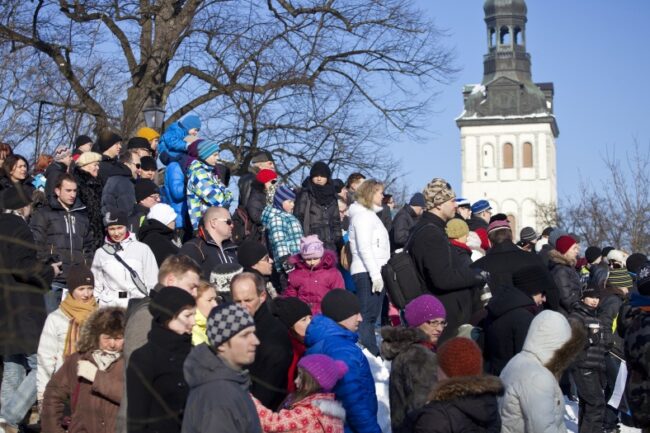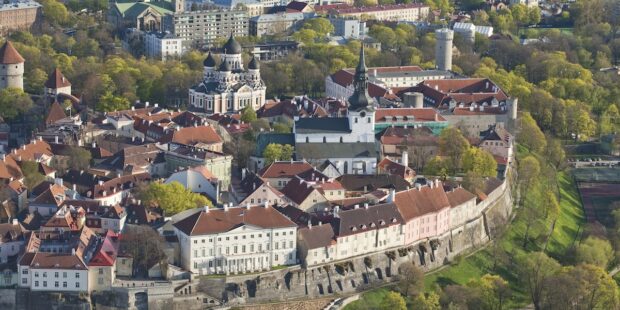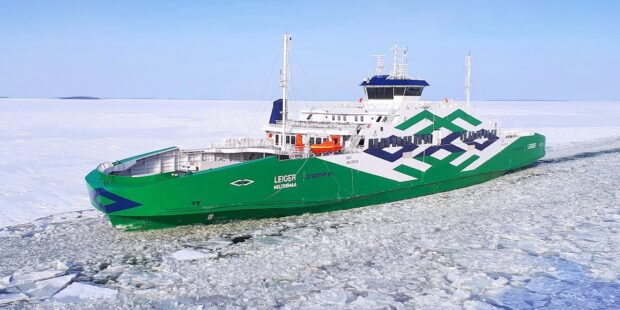Over 15% of Estonia’s population did not live in the country 10 years ago
Text Mark Taylor Photo Andrei Chertkov
Data from the 2021 census shows that 84 per cent of the current population lived in Estonia ten years ago. The proportion of people who have arrived from abroad has risen significantly, making the overall population increasingly international. In the last ten years, internal migration has been predominantly towards Harjumaa.
1.12 million people, or 82.4 per cent of those living in Estonia in 2021, participated in the censuses of both 2011 and 2021. In addition, 1.5 per cent of the population are known to have lived in Estonia during the previous census but not to have participated in it. Therefore, 83.9 per cent of the current population lived in Estonia ten years ago. 5.2 per cent of the rest of the population resided abroad at the time of the previous census, 10.6 per cent were not yet born, and for 0.4 per cent, no information is available.
“Comparing the last ten years with the period between the censuses of 2000 and 2011, the proportion of people living in Estonia during two consecutive censuses has decreased by 2 percentage points. From this it can be concluded that more people than before are moving abroad and from abroad to Estonia,” said Terje Trasberg, a leading analyst at Statistics Estonia.
Three out of four people reside in the same county as ten years ago, and two-thirds live in the same municipality. The population of Ida-Viru county has changed the least, with 83 per cent of its residents living in the same county at the time of the previous census, while the population of Lääne county has undergone the greatest change: 73 per cent of its residents lived in this county during the previous census.
“In general, the trend is clear – the population of cities in Ida-Viru county is the most stable, which primarily means that the number of new people coming in, both due to births and immigration, is low. The population has mainly changed in municipalities with high immigration and young populations, i.e. rural municipalities around Tallinn and Tartu,” Trasberg explained.
5.2 per cent of the population, or 68,600 people, resided abroad at the time of the previous census, 15,200 or 22 per cent of whom were ethnic Estonians. In 2011, the number of people who had lived abroad during the previous census (in 2000) was 11,300, or 0.9 per cent of the population at the time.
“The number and share of arrivals from abroad has thus multiplied between these two periods. Including those who took part in the previous census but have lived abroad in the intervening period, 107,500 people have participated in international migration since the previous census. 41,600 or 39 per cent of them were ethnic Estonians. In total, there are 285,000 people living in Estonia who have resided abroad at some point in their lives,” added Trasberg.
Census data shows that the majority of immigrants to Estonia come from other European countries. Half of the immigrants are citizens of Estonia, and more than half of them have come from Finland, with additional arrivals from UKraine and Russia. Among citizens of other countries, the highest shares of immigrants are from Ukraine[1] (10.8 per cent) and Russia (9.3 per cent). Compared with previous censuses, the percentage of immigrants of other ethnic nationalities has increased significantly.
“Although few in number individually, the combined share of other nationalities – which in this case are all except Estonians, Russians, Ukrainians, Belarusians, and Finns – is 17 per cent (previously 11 per cent). The number of different ethnic nationalities in Estonia has risen from 180 to 211, so the overall picture of immigrant nationalities is much more diverse than before,” said Trasberg.
Most of the migration from abroad was to cities. 48 per cent of the immigrants who have moved to Estonia in the last ten years reside in Tallinn, which is home to a third of Estonia’s population. As many as 60 per cent of immigrants of non-Estonian ethnicity live in Tallinn. Of the total number of international migrants, 60 per cent were men and 40 per cent were women.

To learn more about this and similar topicsEstonia Estonians Finns Immigration Population Census Russians Ukrainians










